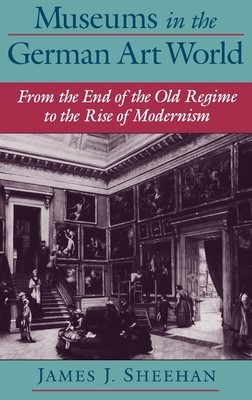
- Išsiųsime per 10–14 d.d.
- Autorius: James J Sheehan
- Leidėjas: Oxford University Press, USA
- ISBN-10: 0195135725
- ISBN-13: 9780195135725
- Formatas: 15.6 x 23.4 x 1.8 cm, kieti viršeliai
- Kalba: Anglų
Atsiliepimai
Aprašymas
Combining the history of ideas, institutions, and architecture, this study shows how the museum both reflected and shaped the place of art in German culture from the late eighteenth century to the early twentieth century. On a broader level, it illuminates the origin and character of the museum's central role in modern culture.
James Sheehan begins by describing the establishment of the first public galleries during the last decades of Germany's old regime. He then examines the revolutionary upheaval that swept Germany between 1789 and 1815, arguing that the first great German museums reflected the nation's revolutionary aspirations. By the mid-nineteenth century, the climate had changed; museums constructed in this period affirmed historical continuities and celebrated political accomplishments. During the next several years, however, Germans became disillusioned with conventional definitions of art and lost interest in monumental museums. By the turn of the century, the museum had become a site for the political and cultural controversies caused by the rise of artistic modernism. In this context, Sheehan argues, we can see the first signs of what would become the modern style of museum architecture and modes of display.
The first study of its kind, this highly accessible book will appeal to historians, museum professionals, and anyone interested in the relationship between art, politics, and culture.

- Autorius: James J Sheehan
- Leidėjas: Oxford University Press, USA
- ISBN-10: 0195135725
- ISBN-13: 9780195135725
- Formatas: 15.6 x 23.4 x 1.8 cm, kieti viršeliai
- Kalba: Anglų Anglų
Combining the history of ideas, institutions, and architecture, this study shows how the museum both reflected and shaped the place of art in German culture from the late eighteenth century to the early twentieth century. On a broader level, it illuminates the origin and character of the museum's central role in modern culture.
James Sheehan begins by describing the establishment of the first public galleries during the last decades of Germany's old regime. He then examines the revolutionary upheaval that swept Germany between 1789 and 1815, arguing that the first great German museums reflected the nation's revolutionary aspirations. By the mid-nineteenth century, the climate had changed; museums constructed in this period affirmed historical continuities and celebrated political accomplishments. During the next several years, however, Germans became disillusioned with conventional definitions of art and lost interest in monumental museums. By the turn of the century, the museum had become a site for the political and cultural controversies caused by the rise of artistic modernism. In this context, Sheehan argues, we can see the first signs of what would become the modern style of museum architecture and modes of display.
The first study of its kind, this highly accessible book will appeal to historians, museum professionals, and anyone interested in the relationship between art, politics, and culture.



Atsiliepimai